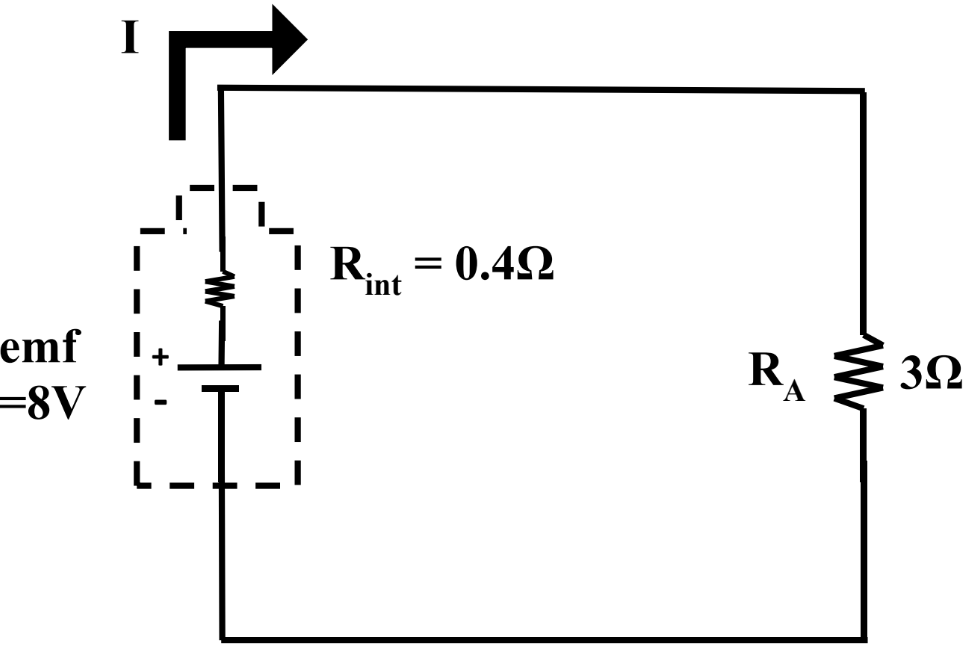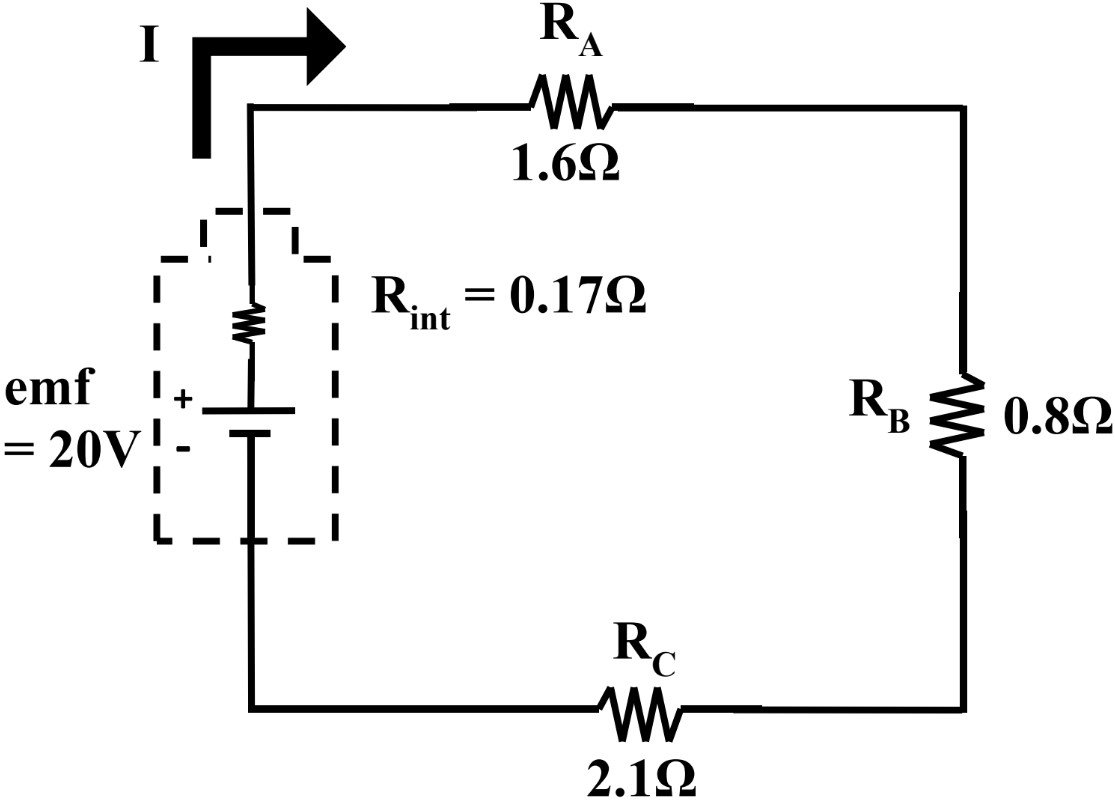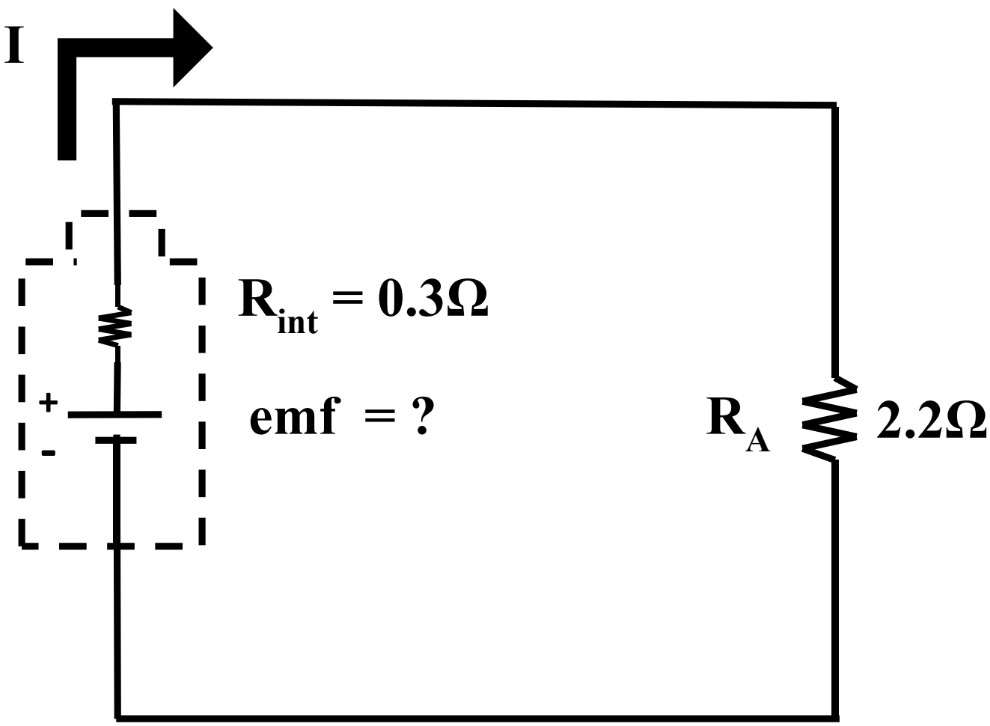In this lesson, we will learn:
- How to compare and contrast the circuits we’ve been drawing so far (an ideal circuit) with a more realistic circuit (containing an EMF as well as internal resistance).
- What is EMF (Electromotive Force)? And what is terminal voltage?
- How to solve for terminal voltage and EMF using 2 methods:
- The traditional formulas for Ohm’s Law ( ) and terminal voltage formula ( )
- Conceptual understanding and voltage divider formula ( )
Notes:
- To represent a more realistic electric circuit, a battery actually contains internal resistance—in other words, the battery itself uses up some of the voltage that it provides to the whole circuit.
- Internal resistance is unavoidable because any material has some resistance
- Metals have a very low (but not zero) resistance and are good conductors for electricity; the greater the resistance of a material, the worse its conductivity
- EMF stands for Electromotive Force. It is a device that transforms one type of energy into electrical energy. (i.e. An alkaline battery undergoes redox reactions whereby chemical energy is transformed into electrical energy to power the circuit).
- A battery is considered a source of electromotive force. A battery is actually composed of an EMF () and an internal resistor ( or ) connected in series.
- Terminal Voltage () is the voltage (potential difference) measured between the terminals (positive and negative terminals) of a battery.
- When no current is flowing through the circuit: emf = terminal voltage
- When there is current flowing through the circuit: emf > terminal voltage
- The general formula for the Terminal Voltage is given as:
- Where:
- is the voltage between the terminals of the battery (in volts, V)
- is the EMF of the battery; total/maximum voltage (in volts, V)
- is the total current flowing through the circuit (in amperes, A)
- is the internal resistance within the battery (in Ohms; )
- is actually the voltage drop across the internal resistor (), thus the formula can be adjusted:
- Furthermore, the terminal voltage represents the amount of electric potential energy (voltage) that is available to the circuit outside of (external to) the battery itself. Thus:
- And the or
- To modify the voltage divider general formula to be used with EMF and terminal voltage questions, we can solve for the total external voltage drop:









